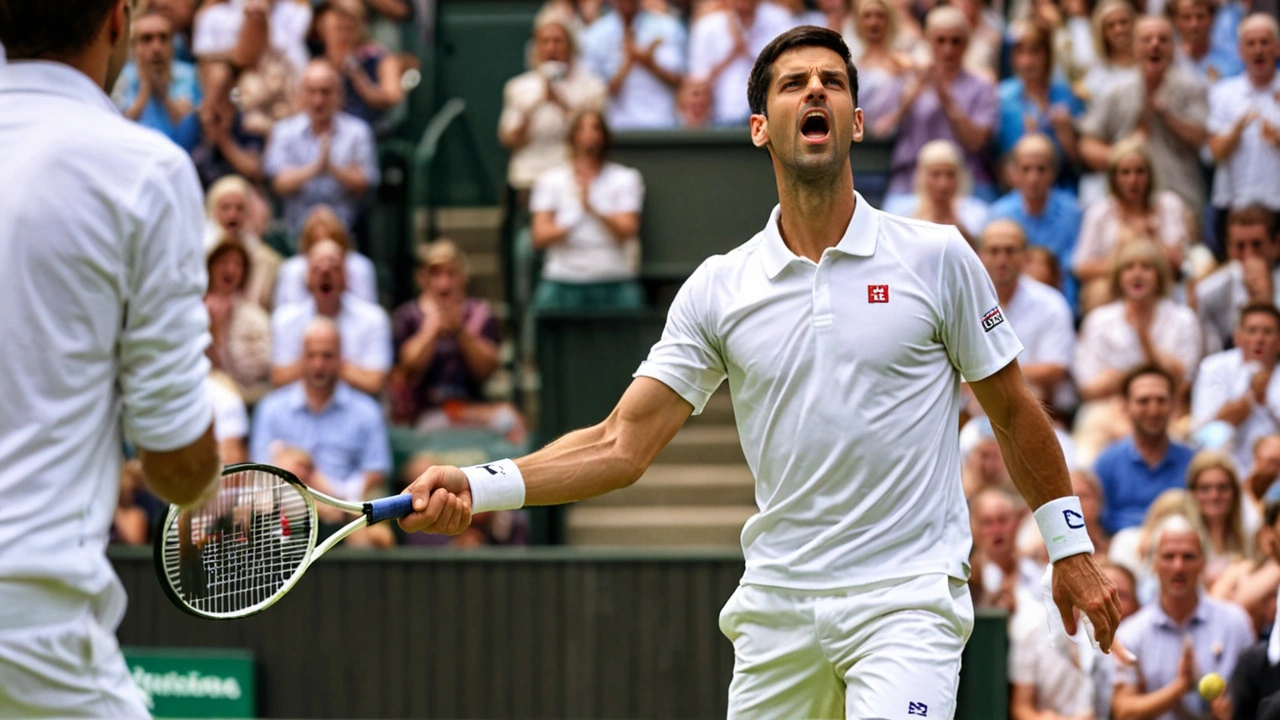
The Quest for Greatness: Djokovic vs. Alcaraz in Wimbledon Final
As Novak Djokovic steps onto the verdant courts of Wimbledon for the men's singles final, he isn't just playing for another title. He is vying to match the unparalleled eight-title record held by Roger Federer and, more significantly, to cement his legacy in the annals of tennis history. Awaiting him on the other side of the net is Carlos Alcaraz, a young and vibrant competitor who has rapidly climbed the ranks to stand at this grand stage.
Roger Federer, with his fluid game and charismatic presence, has long been the darling of the Wimbledon crowd. His emotional victory against Andy Murray in the 2012 final remains a beloved memory for many tennis aficionados. In contrast, Djokovic's relationship with the Wimbledon audience is marked by a mix of admiration and occasional friction. Instances where Djokovic felt disrespected by the crowd have created a complex dynamic that adds another layer of intrigue to his matches. Despite these challenges, Djokovic has repeatedly shown an uncanny ability to harness the crowd's energy—whether in his favor or against him—and deliver stellar performances.
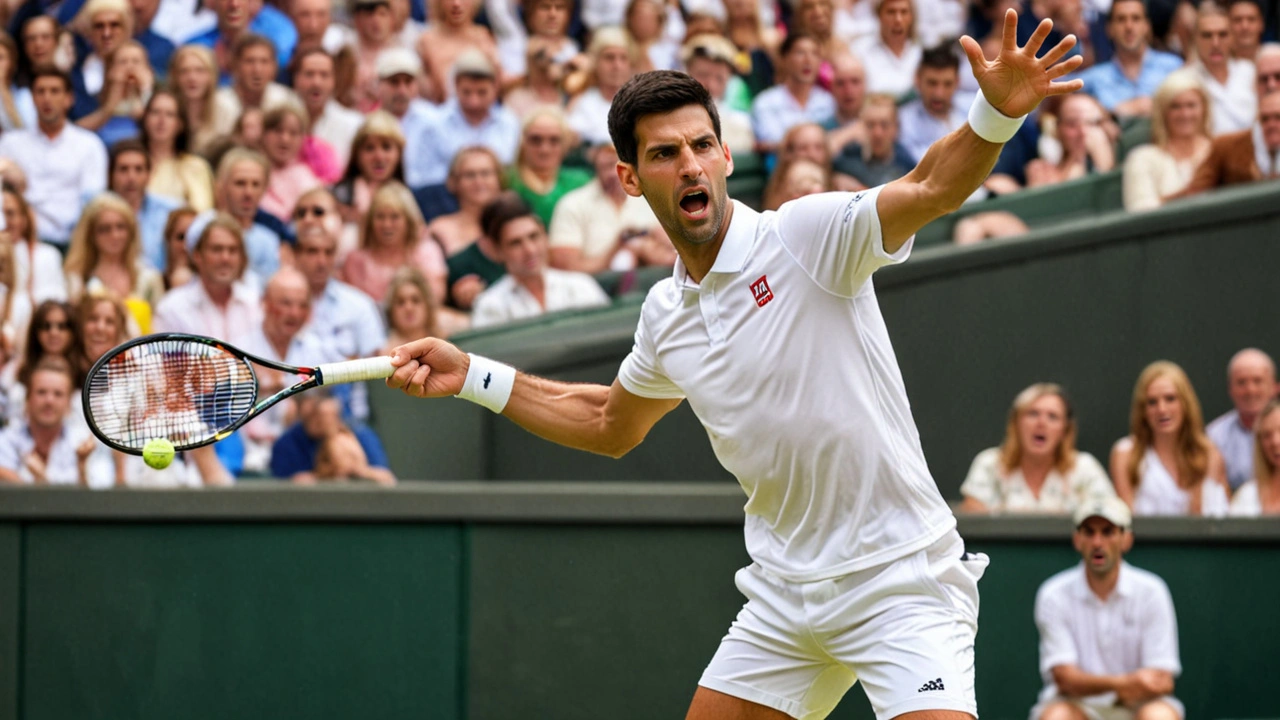
The Enigmatic Realm of Crowd Dynamics
Tennis, unlike many other sports, features a unique interplay between players and the crowd that can often sway the momentum of a match. Spectators, especially at Wimbledon, are known for their passionate support, which sometimes borders on partisanship. For a player like Djokovic who thrives on defying the odds, these dynamics can serve as both a challenge and a motivation. Conversely, Alcaraz, still relatively new to such high-pressure environments, will need to navigate these emotional currents with poise. Handling crowd energy, particularly in a final of this magnitude, requires not just physical endurance but also mental fortitude.
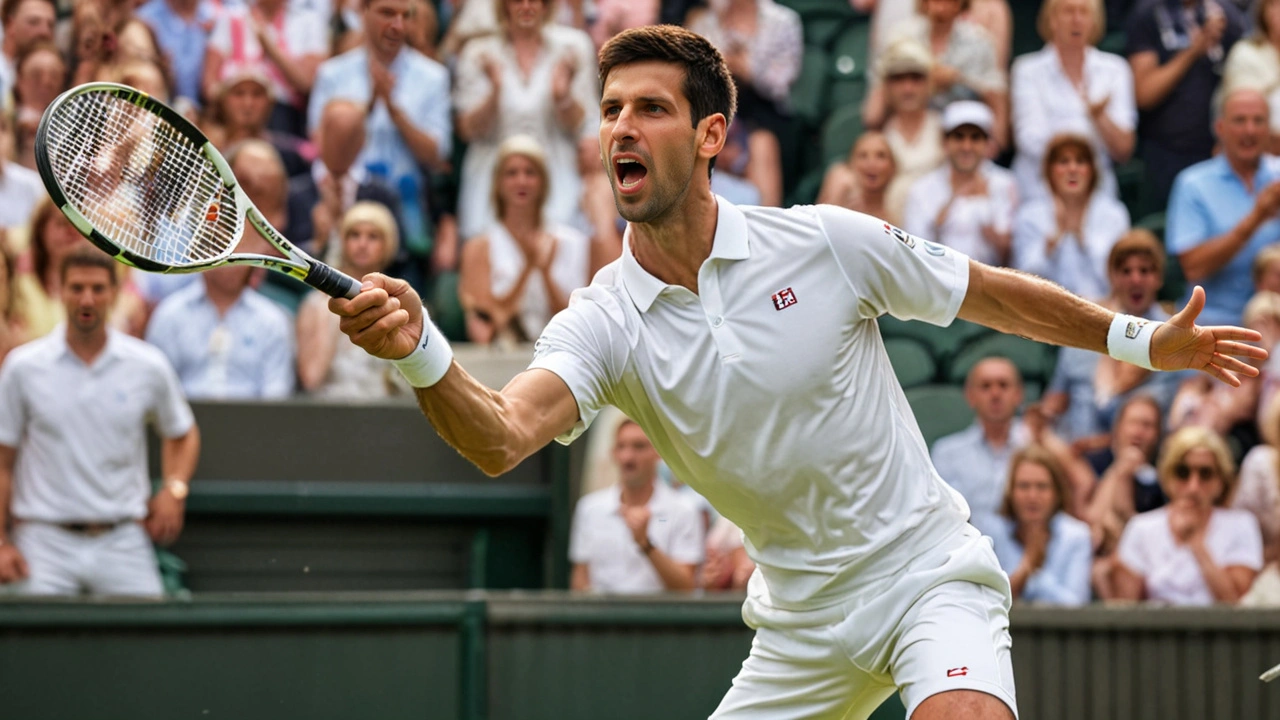
Strengths and Strategies: A Duel of Titans
The upcoming final will be a showcase of contrasting styles and strengths. Djokovic's exceptional serving has often been the cornerstone of his victories. His ability to place the ball with precision, coupled with his proficiency at the net, puts immense pressure on his opponents. Alcaraz, on the other hand, is renowned for his resilience and remarkable defensive skills. His talent for turning seemingly lost points into winning ones has been a key factor in his meteoric rise.
Moreover, Djokovic's mental toughness is legendary. He seems to draw strength from adversity, often elevating his game in the face of challenging circumstances. Alcaraz, although less experienced, has shown remarkable composure and tenacity, qualities that will be crucial in this high-stakes encounter.

Beyond the Final: Historical Implications
A victory for Djokovic would do more than just equal Federer’s Wimbledon record. It would also allow him to surpass Margaret Court's record for the most Grand Slam titles, making him the player with the most Grand Slams in tennis history. This achievement would solidify Djokovic's place as one of the greatest, if not the greatest, players of all time. For Alcaraz, a win would mark the inception of what could potentially be a legendary career, setting the stage for future triumphs.
The narrative of Djokovic seeking to equal Federer’s Wimbledon legacy adds a compelling backdrop to this final. It’s a clash of generations, with Djokovic representing the established order and Alcaraz the promise of the future. Fans and pundits alike are eager to see how this story unfolds.
Regardless of the outcome, this match is poised to be a memorable chapter in the history of Wimbledon. The stakes are monumental, the players enigmatic, and the anticipation palpable. As the final approaches, the tennis world waits with bated breath to witness who will emerge victorious in this battle of titans.
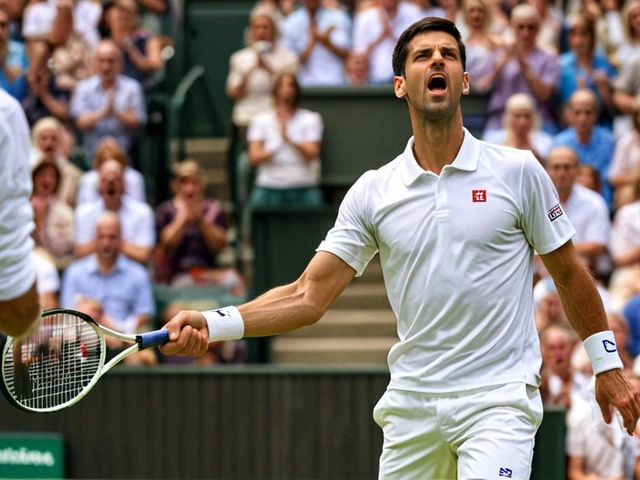


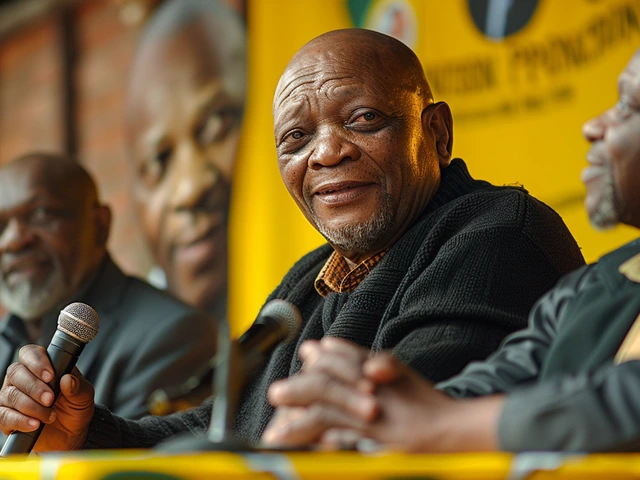


Wow, the excitement is *off the charts*!!! 🎾💥 Novak's chase for that eighth crown is like a fireworks show on Centre Court-bright, loud, and impossible to ignore!!! Let’s all rally behind the drama and hope the grass stays as green as our optimism!!! 🙌
Oh sure, because chasing records is totally more thrilling than *actually* watching a match, right? It's like saying the sequel is better than the original just because it has more sequels.
First of all, the article *misses* the point-Djokovic isn’t “viying” for a title; he’s *already* proven his dominance. Second, the phrasing “young and vibrant competitor” is a tired cliché-cut the fluff.
Honestly, the whole crowd‑energy thing feels a bit overrated. Players win with skill, not with the drama of the stands.
Respectfully, the crowd can actually be a swing factor. Think about those moments when a roar fuels a comeback-ignoring that is ignoring a real tactical element.
Exactly! And Alcaraz’s composure under that roar is a masterclass in mental fortitude-something every up‑and‑coming player should study.
Both legends are just overhyped; it's a marketing ploy.
Don’t be fooled-the governing bodies are secretly rigging outcomes to keep revenue streams intact. The crowd’s boos are part of the illusion!
What truly defines greatness? Is it the number of trophies, or the ability to inspire across generations? Djokovic’s quest raises that timeless question.
While the quantitative metrics are compelling, the qualitative impact-such as influencing youth participation-cannot be dismissed.
Indeed, fostering the next generation is as crucial as the record books. Collaborative coaching initiatives could bridge the gap between eras.
The article tries to paint Djokovic’s Wimbledon quest as a grand narrative, but it glosses over the nuanced reality of modern tennis. First, the notion that crowd dynamics are a binary-either supportive or hostile-fails to capture the subtle shifts that occur over a match. A single cheer for a spectacular rally can quickly turn into a collective sigh when a favorite makes an unforced error. Moreover, the piece neglects the strategic adjustments players make in response to those shifts; it’s not just about “harnessing” energy, it’s about tactical re‑calibration. Djokovic’s famed mental toughness is certainly a factor, yet it is built on a foundation of rigorous physical conditioning and meticulous match preparation. Alcaraz, on the other hand, brings an aggressive baseline game that thrives on counter‑punching, which is a stark contrast to Djokovic’s precise serve‑and‑volley hybrid. The article also misses the historical context of Federer’s eight titles-how the sport’s equipment, surfaces, and even player nutrition have evolved significantly since his era. It’s easy to romanticize the past, but those variables make direct comparisons tenuous at best. Another oversight is the psychological pressure of legacy; Djokovic is not merely chasing a number, he’s confronting the narrative that he is the “greatest of all time,” a label that can become both motivation and burden. In the same vein, Alcaraz faces the weight of being the new standard‑bearer for the next generation, an expectation that can shape his development trajectory. The piece’s discussion of crowd influence also skirts around the fact that Wimbledon’s audience is traditionally more reserved than, say, the French Open or the US Open; the subtlety of their reactions can be misread by players not accustomed to such a setting. Finally, the article could have delved deeper into the technical aspects of the grass courts-how the low bounce and faster pace reward a particular style of play that both Djokovic and Alcaraz must adapt to.
Nice breakdown, but keep it brief next time.
Appreciate the point-balancing depth with brevity is an art, and here we see both sides of that coin.
It is imperative to acknowledge the physiological demands placed upon athletes when contending with fluctuating crowd sentiments; a comprehensive approach to mental conditioning is essential.
While I concur with the necessity of mental fortitude, one must also consider the biomechanical efficiencies that differentiate a champion from a contender.
Ah, the lofty discourse on biomechanics-truly groundbreaking, if you’re a fan of vacuous academic babble.
Yo, that mega essay is wild-like, chill a lil, bro!